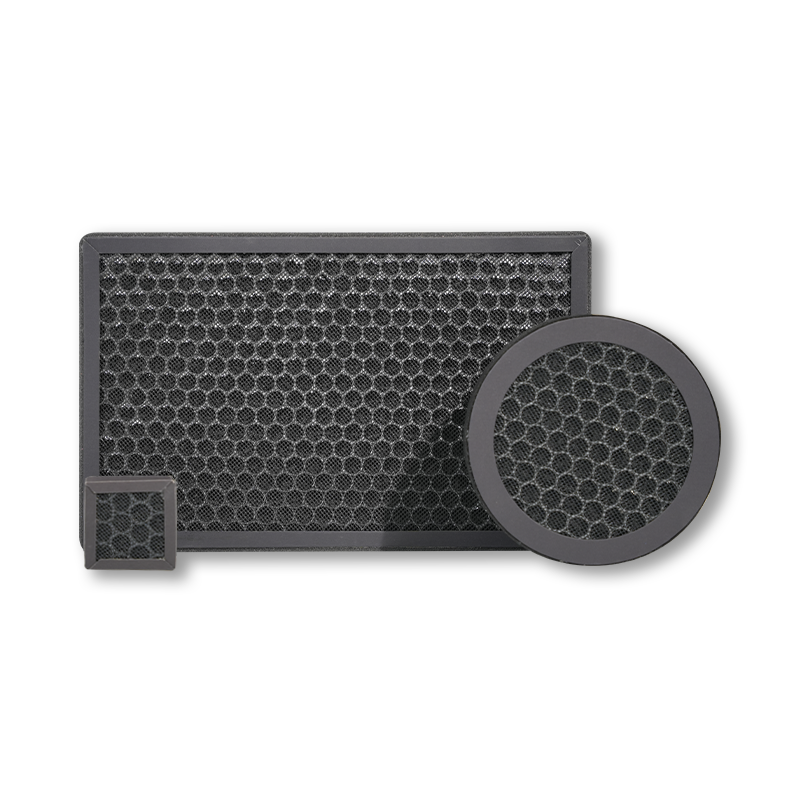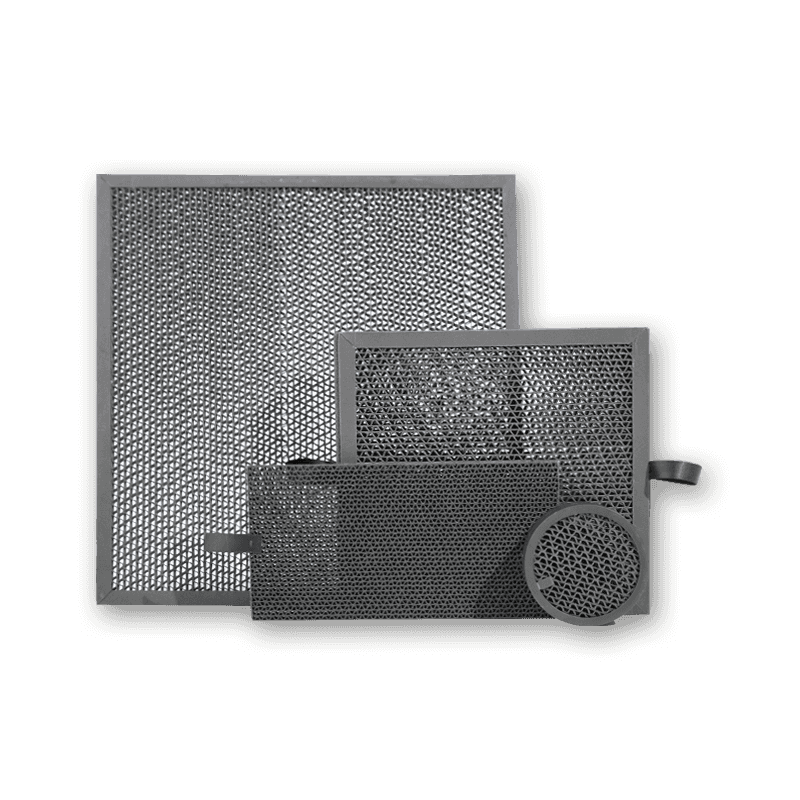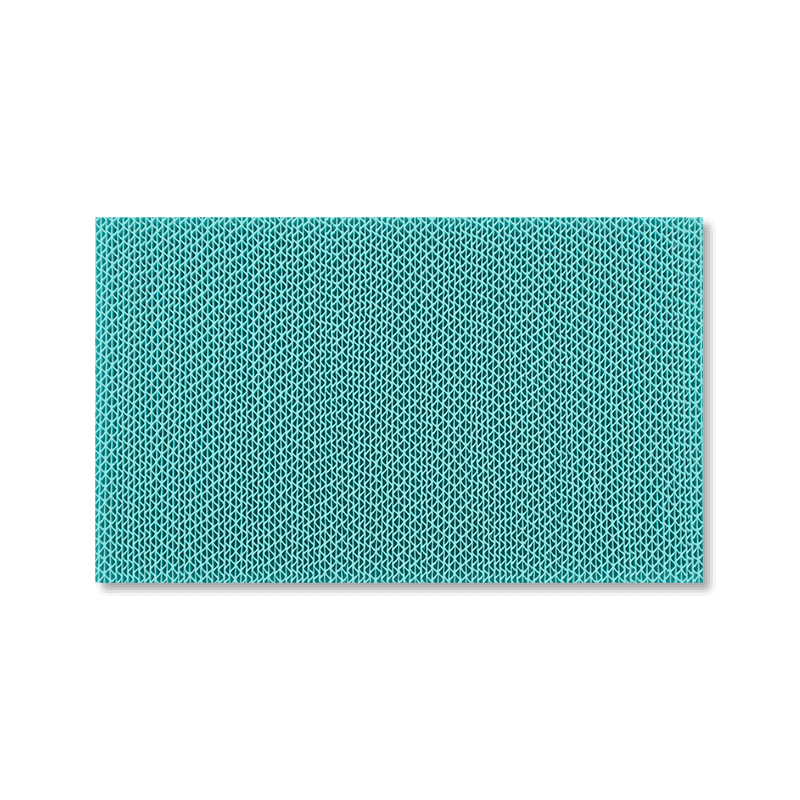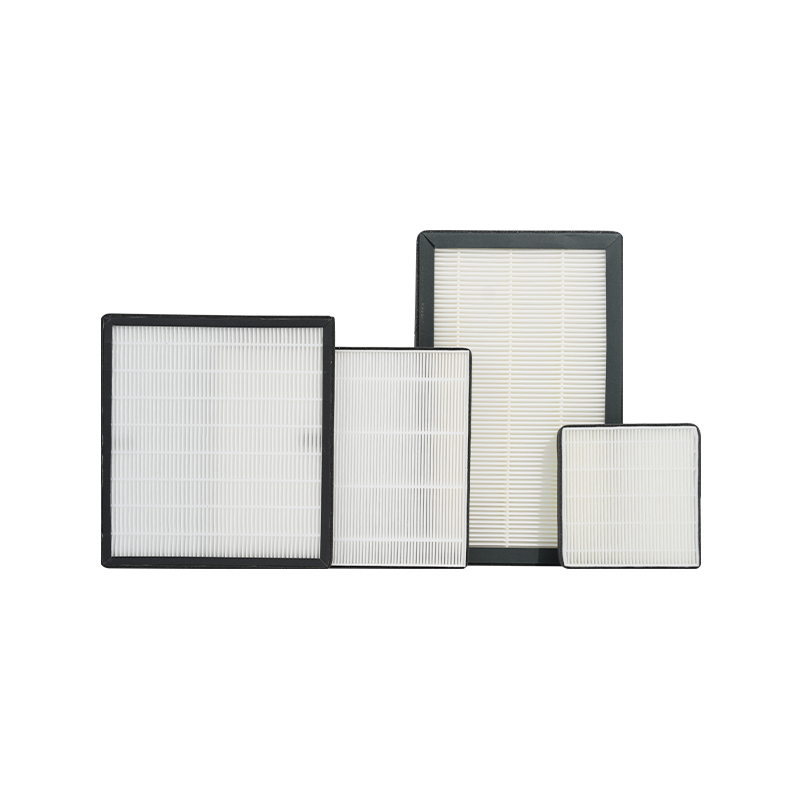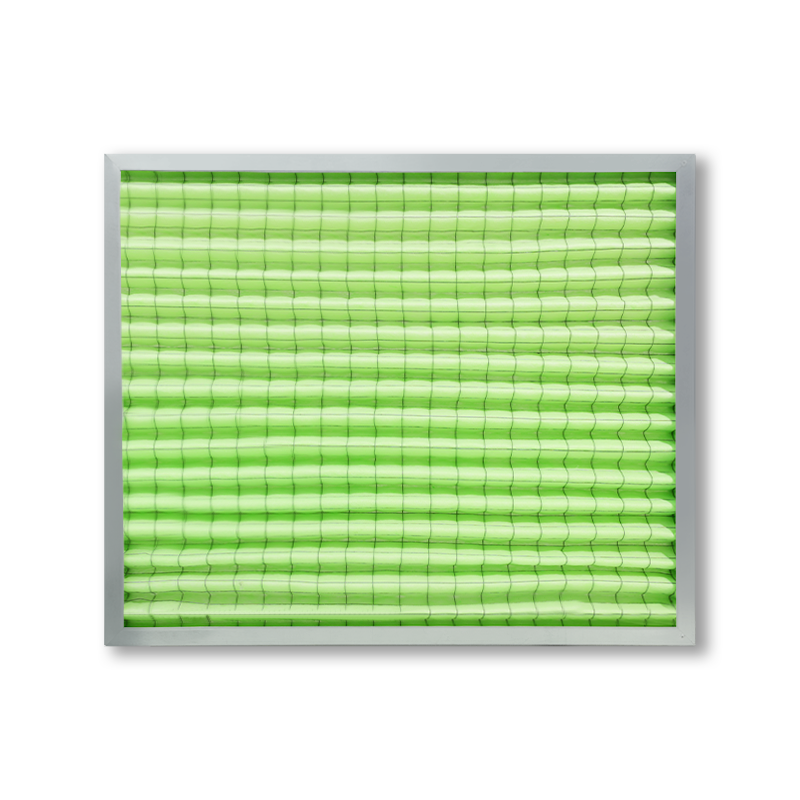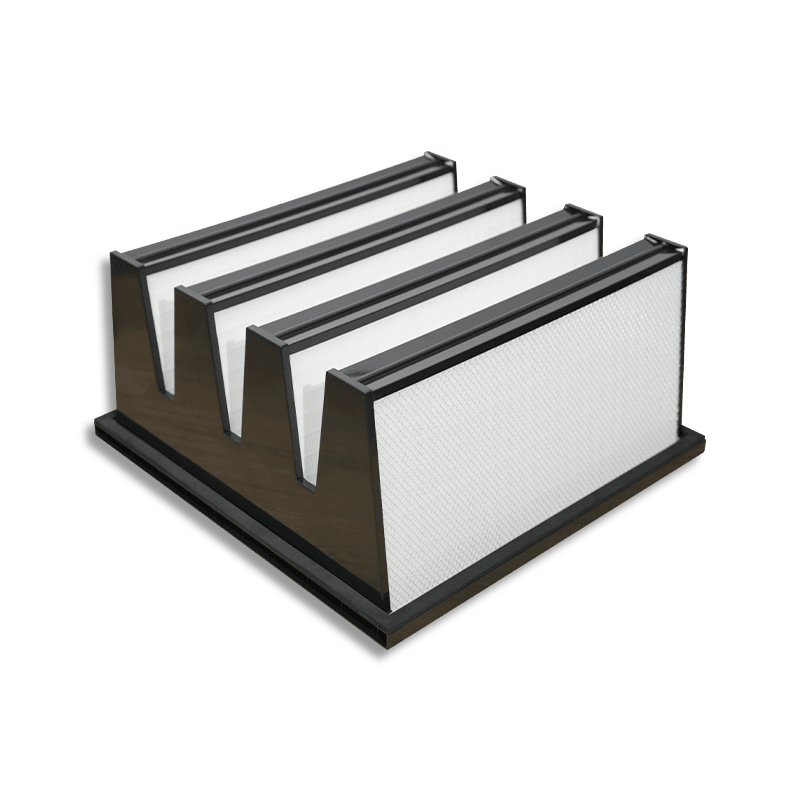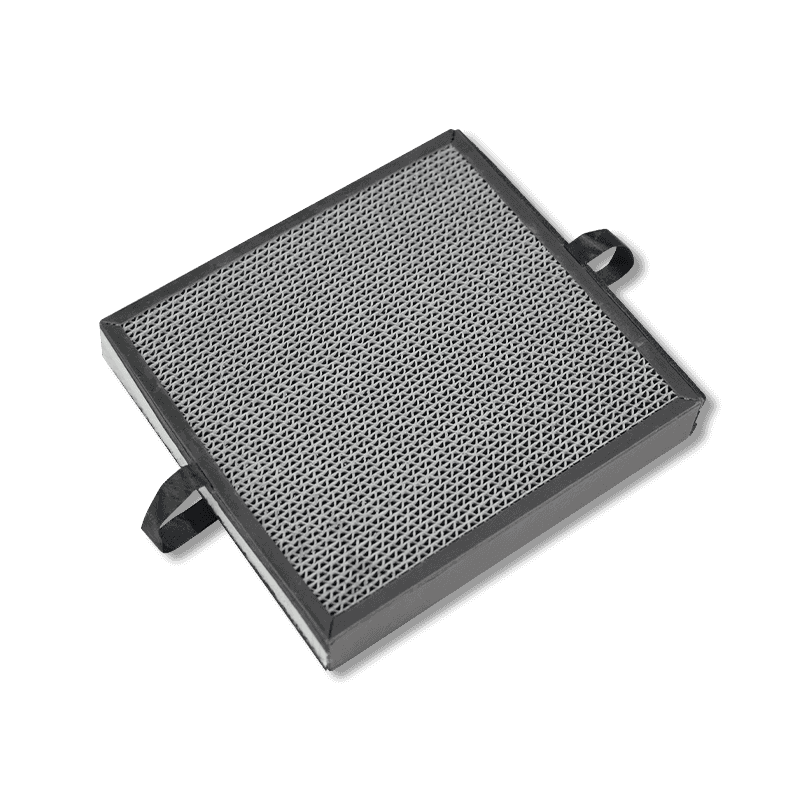Yes, activated carbon filters are effective at removing certain harmful gases, including formaldehyde and volatile organic compounds (VOCs).
1. How Activated Carbon Filters Work
Activated carbon is a highly porous material with an enormous surface area, which allows it to adsorb a wide range of chemicals and gases from the air or water. The way activated carbon works in a filter system is primarily based on a physical process called adsorption, not absorption. This means that pollutants stick to the surface of the carbon rather than being absorbed into the carbon material itself.
Activated Carbon's Structure and Surface Area
The unique structure of activated carbon gives it a very high surface area—up to 3000 m² per gram of carbon, depending on the type of carbon used. This vast surface area is created by activating the carbon at high temperatures, which causes it to develop many tiny pores and crevices. These pores are what make activated carbon such an effective adsorbent. The gases and particles in the air pass through these pores, where they are captured and held on the carbon surface.
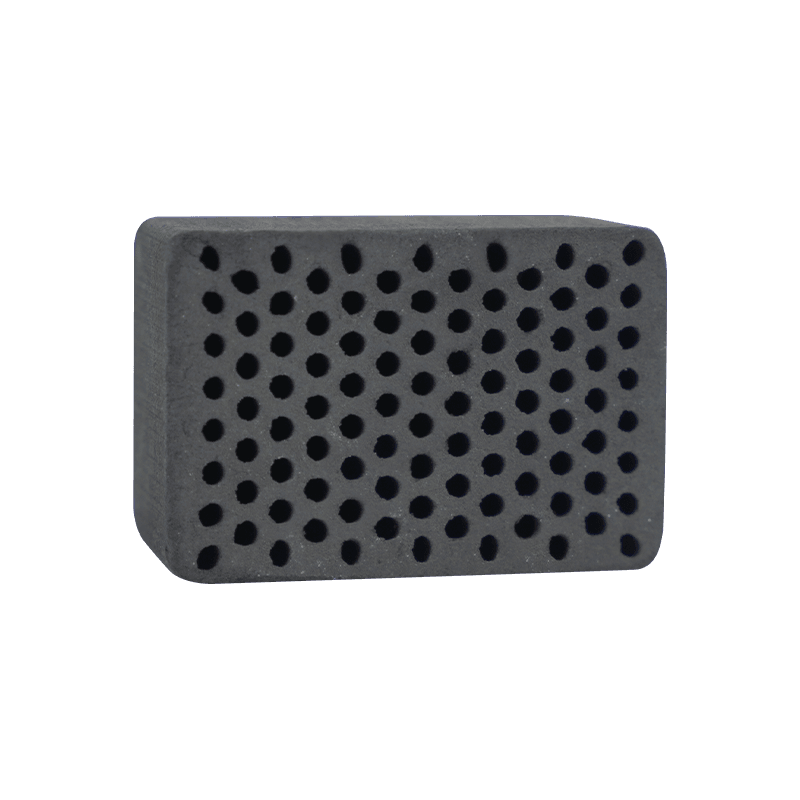
Adsorption Process
The adsorption process involves molecules of a gas or liquid attaching themselves to the surface of the activated carbon. Different gases have varying affinities for activated carbon, meaning some gases are more easily adsorbed than others. This is why activated carbon filters are particularly effective for removing volatile organic compounds (VOCs), such as formaldehyde, benzene, and other chemicals commonly found in indoor environments.
The more porous the carbon and the larger the surface area, the more contaminants it can hold. This is why activated carbon filters are very effective in trapping harmful gases like formaldehyde and other VOCs, which are common indoor pollutants. The air or water passes through the filter, and these harmful substances get trapped in the porous structure of the carbon.
2. Which Harmful Gases Can Activated Carbon Filters Remove?
Activated carbon filters are particularly useful for removing a variety of harmful gases found indoors. Among the most common pollutants that activated carbon can remove are formaldehyde and volatile organic compounds (VOCs).
Formaldehyde
Formaldehyde is a colorless, strong-smelling gas that is commonly found in many household products. It is often used in the production of adhesives, insulation, and certain types of furniture, especially pressed wood products. It is also a byproduct of combustion, such as from smoking or cooking. Long-term exposure to formaldehyde can lead to health issues such as eye irritation, coughing, wheezing, and increased risk of cancer.
Activated carbon filters are particularly effective at removing formaldehyde. The filter adsorbs formaldehyde molecules as they pass through, which reduces their concentration in the air. This makes activated carbon filters highly beneficial in environments with formaldehyde emissions, such as newly furnished homes, offices, or areas where pressed wood products are common.
Volatile Organic Compounds (VOCs)
VOCs are a group of chemicals that easily vaporize at room temperature. They are found in a wide range of household products such as paints, varnishes, cleaning products, air fresheners, and solvents. VOCs are known to contribute to indoor air pollution, causing headaches, dizziness, nausea, and long-term health problems. Prolonged exposure to VOCs has been linked to respiratory problems and, in some cases, cancer.
Common VOCs that activated carbon can remove include:
Benzene: A carcinogenic compound found in gasoline, tobacco smoke, and some paints.
Toluene: Found in paint thinners and adhesives, toluene can cause headaches and dizziness.
Xylene: Found in printing materials and paints, xylene can irritate the eyes and skin.
Acetone: Commonly found in nail polish remover and some cleaning products.
Methylene chloride: Found in paint strippers and adhesives.
Activated carbon adsorbs these VOCs from the air, reducing their concentration and improving air quality. This makes activated carbon an essential component in air purifiers aimed at improving indoor air quality in homes, offices, and industrial settings.
3. Effectiveness and Limitations of Activated Carbon Filters
While activated carbon filters are highly effective in removing specific pollutants like formaldehyde and VOCs, they do have their limitations. Understanding these limitations can help you better manage expectations and use activated carbon filters effectively.
Effectiveness of Activated Carbon Filters
Activated carbon filters are very effective at removing gases and odors from the air, especially in enclosed spaces. The primary benefit of activated carbon filters is their ability to capture a wide range of chemicals. When the carbon material becomes saturated with adsorbed pollutants, it stops working as efficiently, so regular replacement is crucial for maintaining optimal performance.
The effectiveness of an activated carbon filter is largely dependent on:
Type and Quality of Carbon: The type of carbon used in the filter is a critical factor. High-quality activated carbon has a better ability to adsorb harmful gases. Additionally, certain types of activated carbon may be specifically tailored to adsorb particular chemicals, making them more effective in certain environments.
Amount of Carbon: A filter with more carbon can adsorb a greater volume of gases. This is important when filtering larger spaces or dealing with higher concentrations of pollutants.
Flow Rate: The speed at which air passes through the filter also affects its effectiveness. If the airflow is too fast, there may not be enough contact time for pollutants to be adsorbed by the carbon. Slower airflow generally improves filtration efficiency.
Limitations of Activated Carbon Filters
Despite their effectiveness, activated carbon filters have several limitations:
Cannot Remove All Pollutants: Activated carbon is highly effective at removing gases and odors but is less efficient at removing particulates such as dust, pollen, and soot. This is why activated carbon filters are often used in conjunction with other types of filters, such as HEPA (High-Efficiency Particulate Air) filters, which are better at capturing particles.
Saturation Over Time: As mentioned earlier, activated carbon filters have a limited capacity. Over time, the carbon becomes saturated with pollutants, which reduces its ability to adsorb new pollutants. This means the filter will eventually need to be replaced to maintain its effectiveness.
4. Potential Secondary Pollution and Maintenance
One of the important things to consider when using activated carbon filters is the possibility of secondary pollution. Over time, as the activated carbon adsorbs harmful gases, it can become saturated, and in some cases, it may start releasing the trapped pollutants back into the air if not replaced.
Secondary Pollution
When an activated carbon filter becomes saturated, it reaches a point where it can no longer adsorb additional gases effectively. In some cases, the filter may begin to release some of the previously captured pollutants back into the air. This can occur if the carbon becomes overloaded or if it is not replaced in time. Therefore, regular maintenance and timely replacement of the filter are crucial to avoid secondary pollution.
Replacing Activated Carbon Filters
The frequency with which you need to replace your activated carbon filter depends on several factors:
Pollution Levels: If you live in an area with high levels of indoor pollution (e.g., from formaldehyde, VOCs, or tobacco smoke), the filter will saturate faster and need to be replaced more often.
Usage: How often the air purifier is running and the size of the space being filtered will also influence how quickly the filter becomes saturated. Larger spaces and continuous operation generally result in a shorter lifespan for the filter.
Typically, activated carbon filters need to be replaced every 6 months to a year, but this can vary based on the conditions mentioned above. Many air purifiers provide indicators to help users know when it's time to replace the filter.
5. How to Choose and Use Activated Carbon Filters
Choosing and using activated carbon filters properly is essential to ensuring they work effectively. Here are some tips to help you make the best decision:
Choosing the Right Activated Carbon Filter
When selecting an activated carbon filter, consider the following:
Pollutant Type: If you are dealing primarily with formaldehyde or specific VOCs, look for a filter that is designed to target these substances. Some filters are specially engineered to target formaldehyde, while others may be more effective at removing a broader range of VOCs.
Filter Quality: Not all activated carbon filters are created equal. Higher-quality filters will have more adsorptive capacity and will last longer. Choose a filter from a reputable manufacturer that uses premium carbon materials.
Coverage Area: Ensure that the filter you choose is suited for the size of the room or area you want to purify. A filter designed for a smaller room will not be as effective in a large space.

Proper Use of Activated Carbon Filters
To ensure that your activated carbon filter works efficiently, consider the following:
Regular Replacement: Monitor the performance of your filter and replace it when it becomes saturated. Many air purifiers have indicators that signal when it's time for a change.
Ventilation: Ensure that the area where the filter is being used is well-ventilated. Increased airflow allows for better filtration.
Combining Filters: Consider using activated carbon filters alongside HEPA filters for particle removal. This combination is often more effective in purifying air than using either filter alone.

 English
English Español
Español 日本語
日本語
